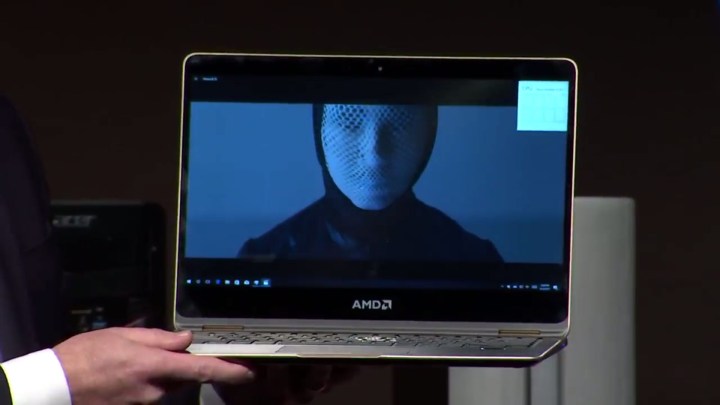
Although AMD has struggled for more than a decade to offer true competition for Intel at the top end of the processor market, where it has excelled is in mobile computing. Its APUs have offered affordable computing with decent performance for some time now and it’s looking to expand on that potential with the new generation of Ryzen core APUs later this year.
What’s doubly exciting about this chip, though, is that along with Ryzen’s strong launch earlier this year, Vega is expected to offer truly top-tier graphics performance, so bringing that power to a singular mobile chip has a lot of people on tenterhooks. The showing of the Ryzen/Vega APU-powered laptop at Computex is our first look at such a system, and though we didn’t get any raw performance numbers or tests, it appears to be working rather well.
The slimline laptop was said to have a sub-15mm thickness at its widest and AMD claims the combination of Zen CPU and Vega lead to big gains in graphical and processor performance. It would certainly be enough to give Intel and Nvidia a run for their money in their respective mobile spaces.
What will be interesting to learn more about as we get closer to this hardware’s launch later this year is what the memory allocation for Vega is like. As PCPer points out, it’s unlikely that an on-die Vega core will make use of the second-generation high-bandwidth memory (HBM2) that the more mainstream graphics cards use. It could have a non-system cache, but for now, that’s mere speculation.




